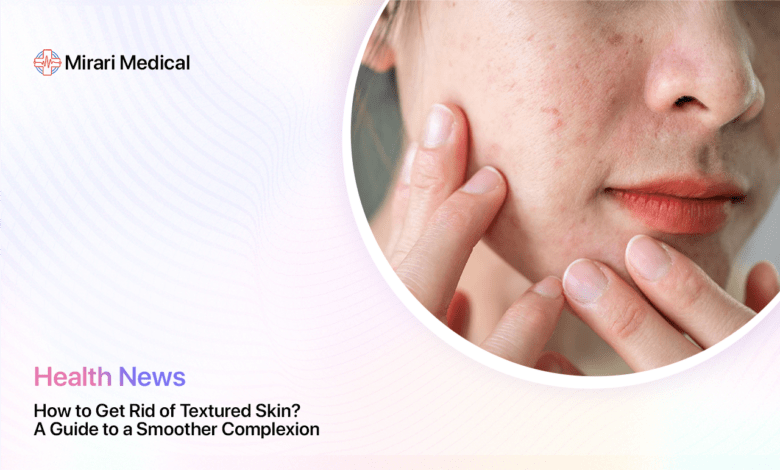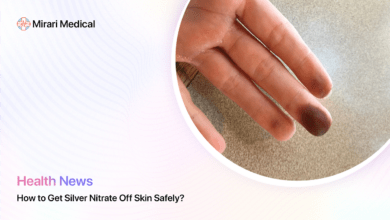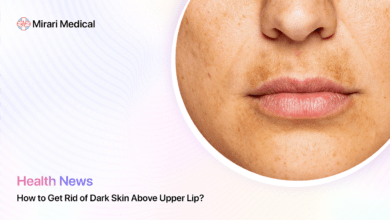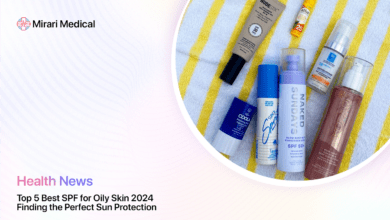How to Get Rid of Textured Skin: A Guide to a Smoother Complexion

You may be interested
- Top 25 Best Japanese Skincare Products 2024
- What Treatments Soothe and Moisturize the Skin?
- Unveiling the Benefits of Skin Toner: What Does Toner Do for Your Skin?
- How to Get Dewy Skin Without Makeup: Secrets to a Naturally Radiant Glow
- Unlock Your Glowing Skin: 10 Essential Habits for a Healthy Complexion
If you’re struggling with textured skin, you’re not alone. Many people deal with uneven, bumpy, or rough skin texture that can make their complexion look less than flawless. Fortunately, there are many strategies and treatments available to help you achieve a smoother, more even appearance.
In this comprehensive guide, we’ll explore what textured skin is, what causes it, and most importantly, how to get rid of textured skin for good. We’ll cover both at-home remedies and professional treatments, so you can find the best approach for your unique skin concerns. By the end, you’ll be equipped with the knowledge and tools to combat textured skin and unveil your smoothest, most radiant complexion yet.
At Mirari Medical, we understand the frustration and self-consciousness that can come with textured skin. That’s why we’re committed to providing you with the most up-to-date, expert-backed information to help you achieve your skincare goals safely and effectively. Let’s dive in and start your journey to smoother, healthier-looking skin.
Unveiling the Mystery: What is Textured Skin and What Does it Look Like?
Before we explore how to treat textured skin, it’s important to understand exactly what it is. Textured skin refers to skin that isn’t completely smooth and even. It can manifest in various ways, including:
- Bumpy or rough patches
- Uneven skin tone or texture
- Enlarged pores
- Acne scars or other types of scarring
- Fine lines and wrinkles
Essentially, if your skin doesn’t feel or look completely smooth when you run your fingers over it, you likely have some degree of skin texture. The severity can vary from person to person, and it can affect different areas of the face and body.
It’s important to note that some skin texture is normal and natural. No one has perfectly smooth, poreless skin all over. However, if your skin texture is bothering you or affecting your confidence, there are steps you can take to improve it.
If you’re unsure whether you have textured skin or if you’re concerned about any specific skin issues, it’s always a good idea to consult with a dermatologist. They can provide a professional assessment of your skin and recommend the best course of treatment for your individual needs.
The Culprits Revealed: Common Causes of Textured Skin
To effectively treat textured skin, it helps to understand the underlying causes. Several factors can contribute to uneven skin texture, including:
- Acne scars: If you’ve struggled with acne, particularly cystic acne, you may be left with scars that create a bumpy or uneven texture on your skin.
- Sun damage: UV rays from the sun can break down collagen and elastin in your skin, leading to fine lines, wrinkles, and rough texture over time.
- Dry skin: When your skin lacks moisture, it can become dry, flaky, and rough. This can exacerbate the appearance of texture and make fine lines more noticeable.
- Aging: As we get older, our skin naturally loses collagen and elasticity. This can cause the skin to sag and develop wrinkles, which can contribute to uneven texture.
- Genetics: Some people are simply more prone to textured skin due to their genes. If your parents or siblings have rough or uneven skin, you may be more likely to develop it as well.
- Skincare habits: Using harsh skincare products, over-exfoliating, or not moisturizing enough can all contribute to skin texture issues over time.
By identifying the specific causes of your textured skin, you can tailor your treatment approach and see better results. For example, if your uneven texture is primarily due to sun damage, you’ll want to focus on products and treatments that can help repair and prevent further UV-induced damage.
Your Gentle Allies: Exfoliation for a Smoother Canvas
One of the key steps in improving skin texture is exfoliation. Exfoliating helps to remove dead skin cells that can build up on the surface of your skin, leading to a rough, dull appearance. By sloughing off these dead cells, you reveal the smoother, brighter skin underneath.
There are two main types of exfoliation: chemical and physical.
- Chemical exfoliation uses ingredients like alpha-hydroxy acids (AHAs) or beta-hydroxy acids (BHAs) to dissolve the bonds between dead skin cells, allowing them to be easily washed away. Common chemical exfoliants include glycolic acid, lactic acid, and salicylic acid.
- Physical exfoliation involves using a tool or scrub with small particles to manually buff away dead skin cells. Examples include cleansing brushes, scrubs with microbeads or sugar, and microdermabrasion treatments.
Both types of exfoliation can be effective for improving skin texture, but it’s important to choose the right method for your skin type and concerns. Those with sensitive skin may prefer gentler chemical exfoliants, while those with oily or acne-prone skin may benefit from the deeper cleaning action of salicylic acid or a physical scrub.
Whichever exfoliation method you choose, it’s crucial to be gentle and not overdo it. Exfoliating too frequently or aggressively can actually damage your skin’s natural barrier, leading to irritation, dryness, and even worse texture over time. Start slowly, using a new exfoliant once or twice a week, and gradually increase frequency if your skin tolerates it well.
Choosing Your Exfoliation Weapon: Selecting the Right Method
With so many exfoliation options available, it can be tricky to know which one is right for you. Here’s a quick guide to help you choose:
- For sensitive skin: Opt for a gentle chemical exfoliant like lactic acid or a low-concentration glycolic acid. Avoid physical scrubs, which can be too abrasive.
- For oily or acne-prone skin: Look for products with salicylic acid, which can penetrate deep into pores to unclog them and prevent breakouts. A gentle physical scrub may also be beneficial for removing excess oil and dead skin.
- For dry or mature skin: Choose a moisturizing chemical exfoliant like glycolic or lactic acid to smooth texture and boost hydration. Avoid strong physical scrubs that can be too harsh on delicate, dry skin.
- For combination skin: Use a combination of gentle chemical and physical exfoliants, targeting specific areas as needed. For example, you might use a salicylic acid spot treatment on oily areas and a glycolic acid toner on drier cheeks.
Remember, everyone’s skin is unique, so what works for someone else may not work for you. It may take some trial and error to find the perfect exfoliation routine for your skin. Be patient, listen to your skin, and adjust your approach as needed.
Hydration Hero: Moisturizing for a Supple Appearance
In addition to exfoliation, keeping your skin properly hydrated is essential for achieving a smooth, supple texture. When your skin lacks moisture, it can become dry, flaky, and rough, exacerbating the appearance of fine lines and uneven texture.
The right moisturizer can help to plump up your skin cells, reducing the appearance of texture and creating a smoother surface. Look for moisturizers that contain humectants like hyaluronic acid or glycerin, which attract water to the skin, as well as emollients like ceramides or fatty acids, which help to seal in that moisture and prevent it from evaporating.
The type of moisturizer you choose will depend on your skin type:
- Lotion: Lightweight and easily absorbed, lotions are a good choice for those with oily or combination skin.
- Cream: Thicker and more nourishing, creams are ideal for dry or mature skin that needs an extra boost of hydration.
- Gel: Cooling and lightweight, gel moisturizers are perfect for oily or acne-prone skin that still needs hydration without feeling greasy.
In addition to using the right moisturizer, there are other ways to keep your skin hydrated and promote a smoother texture:
- Drink plenty of water: Staying hydrated from the inside out can help to plump up your skin cells and reduce the appearance of fine lines and texture.
- Use a humidifier: If you live in a dry climate or spend a lot of time in air-conditioned spaces, a humidifier can help to add moisture back into the air and prevent your skin from drying out.
- Apply moisturizer to damp skin: Applying moisturizer to damp skin can help lock in hydration and enhance the effectiveness of your moisturizer. After cleansing or showering, gently pat your skin with a clean towel until it’s just slightly damp, then apply your moisturizer immediately. This allows the moisturizer to trap some of that water in your skin, leading to a plumper, smoother appearance.
Sun Protection: Shielding Your Skin from Texturizing Rays
One of the biggest culprits behind textured skin is sun damage. UV rays from the sun can break down collagen and elastin in your skin, leading to fine lines, wrinkles, and rough, uneven texture over time. That’s why daily sun protection is essential for maintaining smooth, healthy-looking skin.
Look for a broad-spectrum sunscreen with an SPF of at least 30. This will protect your skin from both UVA rays (which cause premature aging) and UVB rays (which cause sunburn). Apply sunscreen every morning as the last step in your skincare routine, and reapply every 2 hours if you’re spending extended time outdoors.
In addition to using sunscreen, there are other ways to protect your skin from sun damage:
- Wear protective clothing like hats, long sleeves, and sunglasses when outdoors.
- Seek shade during peak sun hours (typically 10am-4pm).
- Use skincare products with antioxidants like vitamin C, which can help protect against free radical damage from UV rays.
Remember, sun damage is cumulative, so even small amounts of unprotected sun exposure can add up over time. By making sun protection a daily habit, you can help prevent textured skin and maintain a smoother, more youthful-looking complexion.
“Beyond the Basics”: Advanced Options for Stubborn Texture
For some people, at-home skincare routines may not be enough to fully address their textured skin concerns. If you’ve been consistent with exfoliation, moisturizing, and sun protection but still aren’t seeing the results you want, it may be time to explore some advanced treatment options.
One popular option is a chemical peel. This involves applying a chemical solution to the skin to remove the outer layers, revealing smoother, more even-toned skin underneath. Chemical peels can be done at varying strengths, from gentle superficial peels to deeper, more intensive treatments.
Another option is microneedling, which involves using a device with tiny needles to create micro-injuries in the skin. This stimulates the skin’s natural healing process, boosting collagen production and leading to smoother, firmer skin over time.
If you’re considering an advanced treatment for textured skin, it’s important to consult with a dermatologist first. They can assess your individual skin concerns and recommend the best treatment plan for your needs. They can also ensure that the treatment is performed safely and effectively to minimize the risk of side effects or complications.
Remember, advanced treatments often require some downtime for recovery, and results may not be immediate. Be patient and follow your dermatologist’s aftercare instructions carefully to ensure the best possible results.
Patience is Key: Maintaining Your Smooth Skin Journey
Achieving and maintaining smooth, even-textured skin is a journey, not a destination. While you may see some improvement quickly, most skincare treatments take time and consistency to deliver optimal results.
Stick with your skincare routine, even if you don’t see dramatic changes right away. Aim to exfoliate, moisturize, and protect your skin from the sun every day, and be patient as your skin gradually improves over time.
It’s also important to have realistic expectations. While skincare can definitely improve the appearance of textured skin, it’s unlikely to completely erase all signs of aging or sun damage. Embrace your unique skin and celebrate the improvements you do see, rather than striving for an unrealistic ideal.
Finally, remember that your skin’s needs may change over time. As you age, your skin may become drier or more sensitive, requiring adjustments to your skincare routine. Pay attention to how your skin looks and feels, and don’t be afraid to make changes as needed to keep your skin looking its best.
Frequently Asked Questions (FAQs)
What can I do to get rid of textured skin overnight?
Unfortunately, there’s no quick fix for textured skin. Consistent skincare practices are key for long-term improvement. Avoid falling for “miracle” products that promise overnight results, as these are often too good to be true and may even damage your skin.
Is it safe to use harsh scrubs on my textured skin?
Harsh scrubs can irritate the skin and worsen texture. Opt for gentler exfoliation methods like chemical exfoliants or soft washcloths. If your skin feels tight, dry, or painful after exfoliating, you may be scrubbing too hard.
What ingredients should I look for in skincare products for textured skin?
Look for products with ingredients like AHAs (e.g. glycolic acid, lactic acid), BHAs (e.g. salicylic acid), and hyaluronic acid, which can help improve texture and hydration. Retinol can also be beneficial for boosting collagen production and smoothing fine lines.
When should I consider consulting a dermatologist for textured skin?
If your textured skin is severe, persistent, or causing you distress, it’s a good idea to consult a dermatologist. They can provide personalized advice and recommend advanced treatment options like chemical peels or microneedling if needed.
Are there any lifestyle changes that can help improve textured skin?
Absolutely! Maintaining a healthy diet rich in antioxidants and omega-3 fatty acids can help support skin health from the inside out. Staying hydrated by drinking plenty of water is also essential. Managing stress through practices like meditation or yoga can help prevent stress-related skin flare-ups.
Key Takeaways for Smoother Skin
- Understand your skin texture concerns and the underlying causes
- Exfoliate gently and regularly to remove dead skin cells and improve texture
- Keep skin hydrated with the right moisturizer for your skin type
- Protect your skin from damaging UV rays with daily sunscreen use
- Consider advanced treatments like chemical peels or microneedling for stubborn texture issues
- Be patient and consistent with your skincare routine for best results
- Consult a dermatologist if you have severe or persistent concerns
- Embrace your unique skin and celebrate the improvements you achieve!
Remember: Consistency is key! By incorporating these tips into your routine and sticking with them over time, you can achieve a smoother, more radiant complexion and finally say goodbye to textured skin. Your smooth skin journey starts now!
Your trusted source for health info, offering expert advice, news, and tips to stay healthy and informed.





